Instruction
Build more speed into your swing
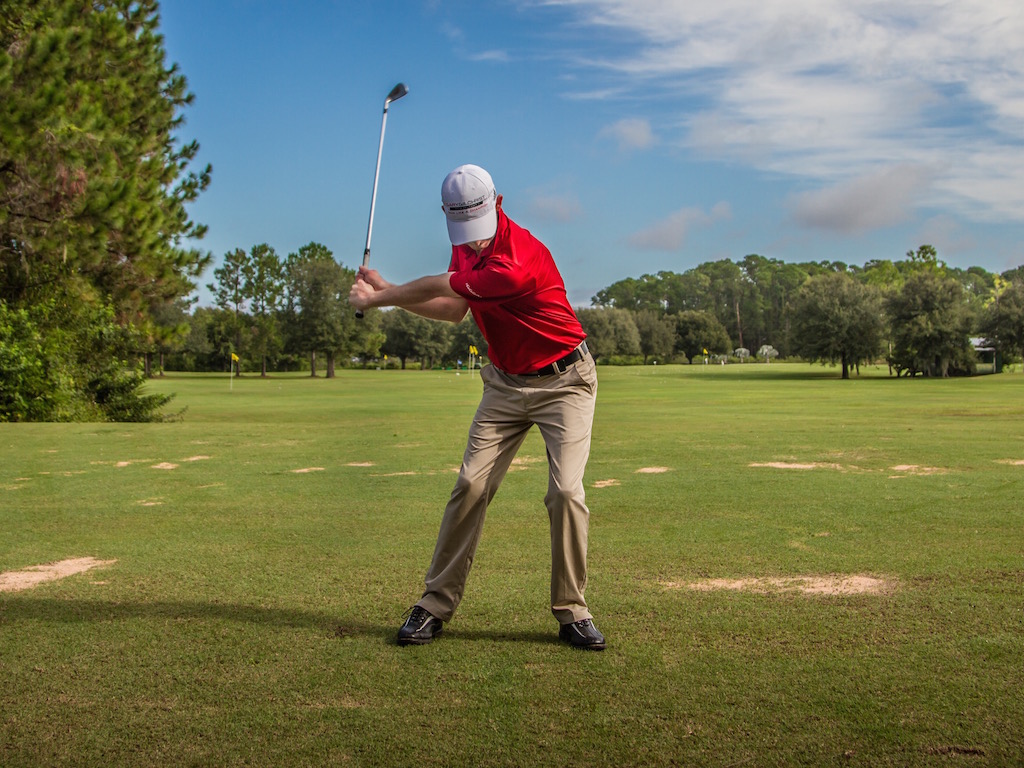
One of the key requests I get from golfers is the need for more distance in their games. There are many different factors that go into increasing power and speed in one’s swing, and you won’t just increase club head speed by feeling like your actually swinging the golf club faster. I have personally found that when I attempt to swing the golf club faster, I’m only able to pick up about 1 mph on Trackman. I also find that when I try to do this I loose control. My face-to-path differential increases, which produces more curvature on the golf ball, and I’m not striking the center of the face with the same consistency. This produces poor results!
With that being the case, how can one increase their speed and add power without just trying to swing the golf club faster?
There are two keys I like to focus on when increasing clubhead speed:
- Effective usage of the ground in the downswing
- Increasing overall lag
These two are mutually exclusive in my mind. When a player can put more pressure into the ground in the beginning of the downswing, and then use the ground as a spring board through impact it will do a few things for the player. Often times, it will help increase lag, or give the club a lighter feel in the transition. When the club is “lighter,” or more on plane, it can often be moved at a faster rate. Depending on the player, it can also improve swing direction.
I recently was part of a teaching summit that had many of the world’s top instructors present. During this summit, a gentleman gave a presentation relating to ground forces. He found that the longer hitters he studied managed to come close to doubling their weight in pressure in pounds as they began their transition into the downswing. Those players would also have the least amount of pressure in pounds at impact. That means they squat early in the transition, and then spring upwards through impact.
A good example of this can be seen in Rory McIlroy’s swing.
As he begins the downswing, he will appear to squat into the ground and then spring upwards through impact. He is probably the most pronounced out of all the players on tour from a visual perspective. If you’d like more information about this particular move, I go into further details about this movement pattern in my new eBook, “The 5 Tour Fundamentals of Golf.”
The drill below is one I feel can give the correct feeling of an improved transition, while also allowing the player to get a good feel for what lag is all about.
- Start with the golf club upside down.
- Take a normal 5 iron stance.
- Before the backswing begins, move your forward foot next to your trail foot.
- Begin the backswing, and step toward the target before you reach your top position.
- Maintain the angle between the trail hand and forearm for as long as possible.
- Try and hear the “whooshing” of the club through impact.
- Turn into a balanced finish.
Many players will find this action difficult at first, but with a little practice, one can begin to pick up between 8-10 mph in their clubhead speed over time.
- LIKE168
- LEGIT18
- WOW1
- LOL5
- IDHT4
- FLOP2
- OB2
- SHANK27
Instruction
The Wedge Guy: The easiest-to-learn golf basic

My golf learning began with this simple fact – if you don’t have a fundamentally sound hold on the golf club, it is practically impossible for your body to execute a fundamentally sound golf swing. I’m still a big believer that the golf swing is much easier to execute if you begin with the proper hold on the club.
As you might imagine, I come into contact with hundreds of golfers of all skill levels. And it is very rare to see a good player with a bad hold on the golf club. There are some exceptions, for sure, but they are very few and very far between, and they typically have beat so many balls with their poor grip that they’ve found a way to work around it.
The reality of biophysics is that the body moves only in certain ways – and the particulars of the way you hold the golf club can totally prevent a sound swing motion that allows the club to release properly through the impact zone. The wonderful thing is that anyone can learn how to put a fundamentally sound hold on the golf club, and you can practice it anywhere your hands are not otherwise engaged, like watching TV or just sitting and relaxing.
Whether you prefer an overlap, interlock or full-finger (not baseball!) grip on the club, the same fundamentals apply. Here are the major grip faults I see most often, in the order of the frequency:
Mis-aligned hands
By this I mean that the palms of the two hands are not parallel to each other. Too many golfers have a weak left hand and strong right, or vice versa. The easiest way to learn how to hold the club with your palms aligned properly is to grip a plain wooden ruler or yardstick. It forces the hands to align properly and shows you how that feels. If you grip and re-grip a yardstick several times, then grip a club, you’ll see that the learning curve is almost immediate.
The position of the grip in the upper/left hand
I also observe many golfers who have the butt of the grip too far into the heel pad of the upper hand (the left hand for right-handed players). It’s amazing how much easier it is to release the club through the ball if even 1/4-1/2″ of the butt is beyond the left heel pad. Try this yourself to see what I mean. Swing the club freely with just your left hand and notice the difference in its release from when you hold it at the end of the grip, versus gripping down even a half inch.
To help you really understand how this works, go to the range and hit shots with your five-iron gripped down a full inch to make the club the same length as your seven-iron. You will probably see an amazing shot shape difference, and likely not see as much distance loss as you would expect.
Too much lower (right) hand on the club
It seems like almost all golfers of 8-10 handicap or higher have the club too far into the palm of the lower hand, because that feels “good” if you are trying to control the path of the clubhead to the ball. But the golf swing is not an effort to hit at the ball – it is a swing of the club. The proper hold on the club has the grip underneath the pad at the base of the fingers. This will likely feel “weak” to you — like you cannot control the club like that. EXACTLY. You should not be trying to control the club with your lower/master hand.
Gripping too tightly
Nearly all golfers hold the club too tightly, which tenses up the forearms and prevents a proper release of the club through impact. In order for the club to move back and through properly, you must feel that the club is controlled by the last three fingers of the upper hand, and the middle two fingers of the lower hand. If you engage your thumbs and forefingers in “holding” the club, the result will almost always be a grip that is too tight. Try this for yourself. Hold the club in your upper hand only, and squeeze firmly with just the last three fingers, with the forefinger and thumb off the club entirely. You have good control, but your forearms are not tense. Then begin to squeeze down with your thumb and forefinger and observe the tensing of the entire forearm. This is the way we are made, so the key to preventing tenseness in the arms is to hold the club very lightly with the “pinchers” — the thumbs and forefingers.
So, those are what I believe are the four fundamentals of a good grip. Anyone can learn them in their home or office very quickly. There is no easier way to improve your ball striking consistency and add distance than giving more attention to the way you hold the golf club.
More from the Wedge Guy
- The Wedge Guy: Golf mastery begins with your wedge game
- The Wedge Guy: Why golf is 20 times harder than brain surgery
- The Wedge Guy: Musings on the golf ball rollback
- LIKE86
- LEGIT13
- WOW6
- LOL1
- IDHT0
- FLOP4
- OB1
- SHANK8
Instruction
Clement: Stop ripping off your swing with this drill!

Not the dreaded headcover under the armpit drill! As if your body is defective and can’t function by itself! Have you seen how incredible the human machine is with all the incredible feats of agility all kinds of athletes are accomplishing? You think your body is so defective (the good Lord is laughing his head off at you) that it needs a headcover tucked under the armpit so you can swing like T-Rex?
- LIKE0
- LEGIT2
- WOW2
- LOL0
- IDHT0
- FLOP0
- OB0
- SHANK2
Instruction
How a towel can fix your golf swing

This is a classic drill that has been used for decades. However, the world of marketed training aids has grown so much during that time that this simple practice has been virtually forgotten. Because why teach people how to play golf using everyday items when you can create and sell a product that reinforces the same thing? Nevertheless, I am here to give you helpful advice without running to the nearest Edwin Watts or adding something to your Amazon cart.
For the “scoring clubs,” having a solid connection between the arms and body during the swing, especially through impact, is paramount to creating long-lasting consistency. And keeping that connection throughout the swing helps rotate the shoulders more to generate more power to help you hit it farther. So, how does this drill work, and what will your game benefit from it? Well, let’s get into it.
Setup
You can use this for basic chip shots up to complete swings. I use this with every club in my bag, up to a 9 or 8-iron. It’s natural to create incrementally more separation between the arms and body as you progress up the set. So doing this with a high iron or a wood is not recommended.
While you set up to hit a ball, simply tuck the towel underneath both armpits. The length of the towel will determine how tight it will be across your chest but don’t make it so loose that it gets in the way of your vision. After both sides are tucked, make some focused swings, keeping both arms firmly connected to the body during the backswing and follow through. (Note: It’s normal to lose connection on your lead arm during your finishing pose.) When you’re ready, put a ball in the way of those swings and get to work.

Get a Better Shoulder Turn
Many of us struggle to have proper shoulder rotation in our golf swing, especially during long layoffs. Making a swing that is all arms and no shoulders is a surefire way to have less control with wedges and less distance with full swings. Notice how I can get in a similar-looking position in both 60° wedge photos. However, one is weak and uncontrollable, while the other is strong and connected. One allows me to use my larger muscles to create my swing, and one doesn’t. The follow-through is another critical point where having a good connection, as well as solid shoulder rotation, is a must. This drill is great for those who tend to have a “chicken wing” form in their lead arm, which happens when it becomes separated from the body through impact.
In full swings, getting your shoulders to rotate in your golf swing is a great way to reinforce proper weight distribution. If your swing is all arms, it’s much harder to get your weight to naturally shift to the inside part of your trail foot in the backswing. Sure, you could make the mistake of “sliding” to get weight on your back foot, but that doesn’t fix the issue. You must turn into your trial leg to generate power. Additionally, look at the difference in separation between my hands and my head in the 8-iron examples. The green picture has more separation and has my hands lower. This will help me lessen my angle of attack and make it easier to hit the inside part of the golf ball, rather than the over-the-top move that the other picture produces.


Stay Better Connected in the Backswing
When you don’t keep everything in your upper body working as one, getting to a good spot at the top of your swing is very hard to do. It would take impeccable timing along with great hand-eye coordination to hit quality shots with any sort of regularity if the arms are working separately from the body.
Notice in the red pictures of both my 60-degree wedge and 8-iron how high my hands are and the fact you can clearly see my shoulder through the gap in my arms. That has happened because the right arm, just above my elbow, has become totally disconnected from my body. That separation causes me to lift my hands as well as lose some of the extension in my left arm. This has been corrected in the green pictures by using this drill to reinforce that connection. It will also make you focus on keeping the lead arm close to your body as well. Because the moment either one loses that relationship, the towel falls.


Conclusion
I have been diligent this year in finding a few drills that target some of the issues that plague my golf game; either by simply forgetting fundamental things or by coming to terms with the faults that have bitten me my whole career. I have found that having a few drills to fall back on to reinforce certain feelings helps me find my game a little easier, and the “towel drill” is most definitely one of them.
- LIKE12
- LEGIT2
- WOW2
- LOL0
- IDHT0
- FLOP2
- OB0
- SHANK8
-

 19th Hole2 weeks ago
19th Hole2 weeks agoDave Portnoy places monstrous outright bet for the 2024 Masters
-

 19th Hole3 weeks ago
19th Hole3 weeks agoThings got heated at the Houston Open between Tony Finau and Alejandro Tosti. Here’s why
-

 19th Hole2 weeks ago
19th Hole2 weeks agoTiger Woods arrives at 2024 Masters equipped with a putter that may surprise you
-

 19th Hole3 weeks ago
19th Hole3 weeks agoReport: Tiger Woods has ‘eliminated sex’ in preparation for the 2024 Masters
-

 19th Hole1 week ago
19th Hole1 week agoTwo star names reportedly blanked Jon Rahm all week at the Masters
-

 19th Hole6 days ago
19th Hole6 days agoReport: LIV Golf identifies latest star name they hope to sign to breakaway tour
-

 19th Hole7 days ago
19th Hole7 days agoNeal Shipley presser ends in awkward fashion after reporter claims Tiger handed him note on 8th fairway
-

 19th Hole3 weeks ago
19th Hole3 weeks agoAddiction, spinal fusion, and scam artists – Everything Anthony Kim revealed in candid interview with David Feherty

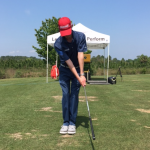
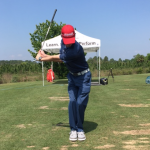
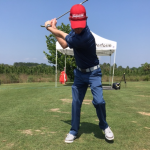
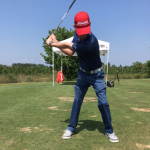
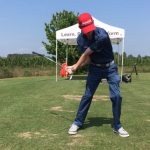
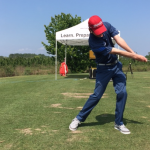













Harry
Apr 28, 2015 at 10:40 am
Bill: This is an excellent synthesis of some of the current thinking about ground forces. I really liked the way you pulled it together and it fits with exactly what i’ve been working on…….getting more pressure into the ground from my lead foot PRIOR to the downswing, and then releasing that pressure as the club heads from the top to impact. I wasn’t quite as sure about the part about maintaing the lag. Couldn’t agree more that lag is essential. I worked for years with my coach on lag drills, but i’m not convinced that trying to hold angles works, and a potential problem can be not releasing the club until it’s too late. Recently, i’m trying to release the club from the top, which in the past, i would have considered throw away. When i look on video, it is not. I’d be interested in your thoughts and thanks again for such a great article.
Chuck
Apr 27, 2015 at 12:21 pm
For a simple way to increase club head speed and distance consider using the protocol developed at velocityshaft(dot)com. It simply works without having to adjust your swing mechanics.
Perry
Apr 27, 2015 at 9:51 am
“Mutually exclusive” means both things can’t happen at once. “Complementary” might be a better word for you to use regarding ground force and lag…
Philip
Apr 27, 2015 at 12:24 am
Gave this a try as I have used it in the past when my swing was not ready for it and it just felt like falling. Surprisingly it now feels pretty good. Seems to connect my swing a little bit more and reduces my right to left enough to take it out altogether.
other paul
Apr 26, 2015 at 9:00 pm
I did some more stretching, worked out a little bit. And swung a driver shaft with a small weight on the end (no weight was to lite). Took a single lesson and got my hands forward more at impact and went from 230 avg up to 270 average. Long drive 303. And still getting faster.
Bill Schmedes III
Apr 26, 2015 at 7:39 pm
Thank you Dakota & Adam!
Adam
Apr 26, 2015 at 7:21 pm
Thank you, but I have more distance than I know what to do with… never said anyone, great post.
Dakota
Apr 25, 2015 at 11:07 pm
Thank you for this tip I lost about 40 yards and 15 mph per hour of clubhead speed about 2 years ago , and not quite sure what caused it. No, instructor believes me, and now that my form is good, I will work hard this drill. It is no fun hitting the driver 240 when you used to hit it 280.
Bill Schmedes III
Apr 25, 2015 at 10:14 pm
Thank you Gus
Gus
Apr 25, 2015 at 9:14 pm
Excellent article. I will be doing this drill for sure, everyone can use a little more controllable distance.